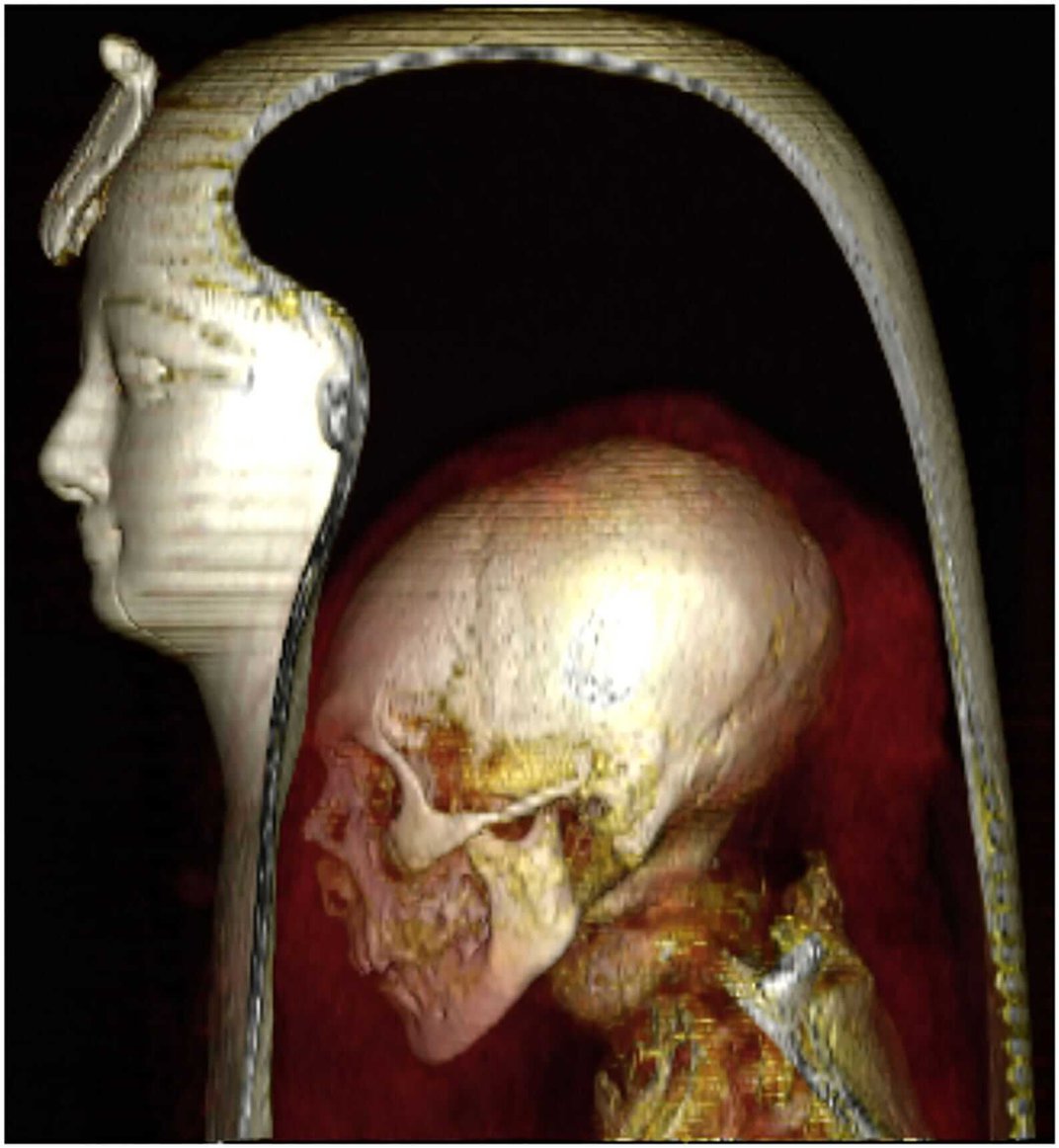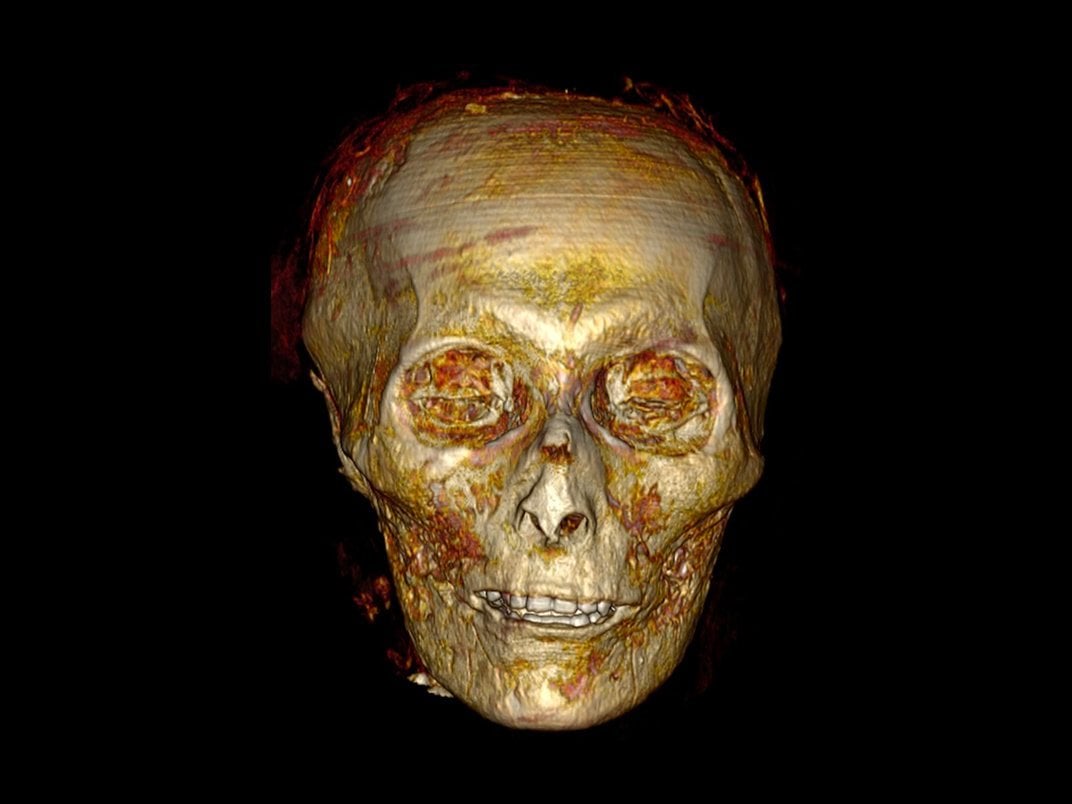
The mummified remains of Amenhotep I, who ruled Egypt from around 1525 to 1504 BC, were unearthed over a century ago, in1881. But the pharaoh's sarcophagus, exquisitely dressed in linens and an ornate, lifelike face mask, was left untouched for fear of damaging his fragile body. Now, researchers have used three-dimensional computerized tomography (CT) to peek through the layers and obtain invaluable information about the ancient king, who lived over 3,500 years ago.
"By digitally unwrapping ... the mummy and 'peeling off' its virtual layers -- the face mask, the bandages, and the mummy itself -- we could study this well-preserved pharaoh in unprecedented detail," said study co-leader Dr. Sahar Saleem, professor of radiology at the Faculty of Medicine at Cairo University.

The team, which included prominent Egyptologist Zahi Hawass, believes that Amenhotep I was about 5 feet, 5 inches (168 cm) tall. He had a narrow nose and chin and curly hair. His surprisingly well-preserved teeth suggest the pharaoh may have practiced good dental hygiene. The scans revealed that, unlike with other pharaohs, the ancient king's brain had not been removed during the mummification process. A bone analysis indicated the pharaoh was about 35 years old when he died. Since the body was free of any apparent injuries before his death, experts suspect the pharaoh may have succumbed to an illness.
Amenhotep I's mummy was not found at its original burial site — the location of which remains unknown to researchers to this day. Instead, it was unearthed alongside several other royal mummies near modern-day Luxor. Hieroglyphic records indicate that the 21st Dynasty priests unwrapped and rewrapped the bodies to repair damage caused by tomb robbers. The scans showed that in Amenhotep I's case, that meant painstakingly reattaching the pharaoh's head, which had been severed from his body by the tomb raiders. The clergymen also replaced the bandages that had come undone.

Dr. Saleem and Dr. Zawass had previously thought that the clergymen's only motivation to restore the mummies was to extract the jewels and other precious items to use for later kings. However, the 30 amulets and a golden girdle on the pharaoh's body proved that was not the case.
"We show that at least for Amenhotep I, the priests of the 21st dynasty lovingly repaired the injuries inflicted by the tomb robbers, restored his mummy to its former glory, and preserved the magnificent jewelry and amulets in place," said Dr. Saleem.
The researchers, who published their findings in the journal Frontiers in Medicine Pathology on December 26, 2021, say this is not the first time digital technology has been used to examine mummies. However, it is the first detailed analysis of its kind. "We are planning now to do the same type of a study to all the royal mummies," Dr. Hawass told NBC News.
Resources: NPR.com, LiveScience.com,frontiersin.org,.eurekalert.org, NBC.com
